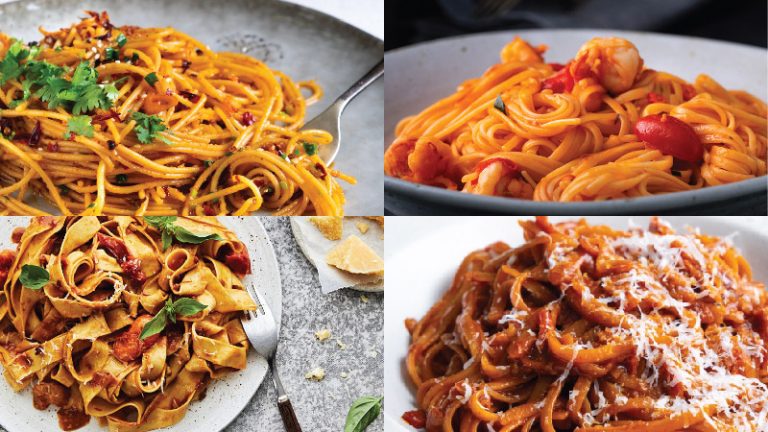Caesar Salad Recipe : History, Variations, and Perfect Pairings
Caesar salad originated in Tijuana, Mexico, in 1924. Chef Caesar Cardini, an Italian immigrant, created it on a busy Fourth of July weekend when kitchen supplies were low. He used Romaine lettuce, garlic, croutons, Parmesan cheese, boiled eggs, olive oil, and Worcestershire sauce. These ingredients formed the basis for what would become a culinary staple.
Over the years, the recipe evolved. Anchovies became a common addition, enriching the flavor profile. Chefs started experimenting with variants like adding grilled chicken, shrimp, or using kale instead of Romaine lettuce. This adaptability allowed the Caesar salad to remain relevant and popular.
Global Popularity and Variations
Caesar salad achieved global recognition quickly. Restaurants worldwide began featuring it on their menus, catering to diverse palates by introducing regional twists. In Italy, chefs incorporated sardines. In Japan, miso paste became a surprising yet delightful addition.
These variations highlight the salad’s versatility. For example, vegan versions replace cheese with nutritional yeast, while gluten-free options omit croutons. This diversity makes Caesar salad a universal favorite, appealing to different dietary needs and culinary preferences.
Breaking Down “The Last Caesar Salad Recipe You’ll Ever Need”
Key Ingredients and Their Roles
The Caesar salad relies on a few key ingredients to achieve its iconic flavor and texture.
- Romaine Lettuce: Provides crunch and a mild, slightly bitter taste.
- Garlic: Adds pungency and depth.
- Croutons: Deliver crunch and a contrast in texture.
- Parmesan Cheese: Offers a rich, umami flavor.
- Worcestershire Sauce: Adds a complex, savory note.
- Caesar Dressing: Combines egg yolks, lemon juice, mustard, anchovies, garlic, Parmesan cheese, and oil for a creamy texture with bold, savory flavors.
- Prepare the Lettuce: Wash and dry Romaine lettuce thoroughly. Tear into bite-sized pieces.
- Make the Croutons: Cut bread into cubes. Toss with olive oil and garlic. Bake at 375°F until golden brown.
- Create the Dressing: Crush garlic with salt in a bowl. Add egg yolks, mustard, anchovies, and Worcestershire sauce. Whisk in lemon juice. Gradually whisk in oil until emulsified. Stir in Parmesan cheese.
- Combine Ingredients: Toss lettuce, croutons, and dressing in a large bowl. Ensure even coating.
- Serve with Extra Cheese: Grate additional Parmesan on top before serving.
These steps ensure a perfect balance of flavor and texture in the Caesar salad.
Why This Recipe Is Different
Unique Ingredients and Techniques
This Caesar salad recipe stands out due to its unique ingredients and techniques. Traditional recipes use Romaine lettuce, but this version incorporates a mix of green and red Romaine for added color and texture. Instead of regular garlic, roasted garlic offers a sweeter, more mellow flavor profile. The dressing, typically a mix of anchovies and Worcestershire sauce, gets a twist with the addition of fresh lemon zest and Dijon mustard for a tangy kick. Additionally, homemade croutons, baked with garlic-infused olive oil, provide a crunchy contrast to the crisp lettuce. To finish, shaved Parmesan replaces grated, enhancing the salad’s texture and presentation.
Health and Nutritional Benefits
This recipe also emphasizes health and nutritional benefits. Using a mix of greens increases the variety of nutrients, offering more vitamins A and K. Roasted garlic, compared to raw, aids in digestion and provides antioxidant properties. Incorporating olive oil instead of traditional Caesar dressing fats like mayonnaise reduces saturated fat content while adding beneficial monounsaturated fats. The homemade dressing minimizes additives and preservatives, promoting a cleaner eating experience. The overall nutrient profile ensures a balanced meal that’s not only delicious but also aligns with health-conscious diets.
Pairing and Serving Suggestions
Best Complements for Caesar Salad
A Caesar salad pairs well with various main courses. Grilled chicken, salmon, and shrimp add protein, enhancing the dish. For vegetarian options, grilled tofu or portobello mushrooms work perfectly. Side dishes like garlic bread and roasted vegetables (asparagus, bell peppers) create a balanced meal. Wine enthusiasts might opt for a crisp Chardonnay or a light Pinot Noir to complement the salad’s flavors.
Occasions and Seasons for Serving
Serve Caesar salad as a versatile dish for multiple occasions. During summer barbecues, it’s a fresh, cooling side. At dinner parties, it works as a sophisticated starter or a light main course. Seasonal variations can adjust; add grilled peaches in summer or roasted squash in winter. Call it a holiday staple or a casual weekday meal, the salad adapts well to different scenarios and climates.
Conclusion
With this ultimate Caesar salad recipe, you’re ready to elevate your culinary repertoire. The innovative ingredients and versatile serving suggestions ensure it’s perfect for any occasion. Whether you’re hosting a summer barbecue or a cozy winter dinner, this Caesar salad adapts beautifully to the season. Pair it with your favorite main course and a complementary wine, and you’ve got a dish that’s both delicious and memorable. Enjoy the blend of classic and contemporary flavors, and make this your go-to Caesar salad recipe for years to come.






